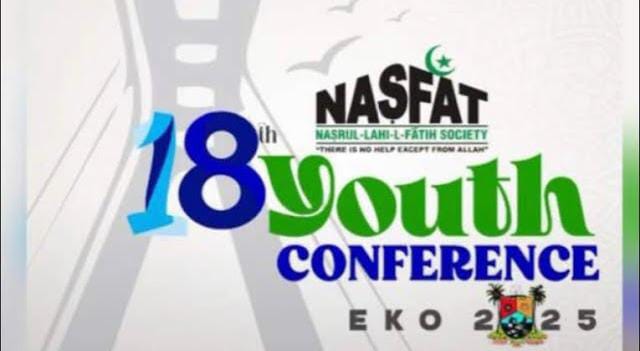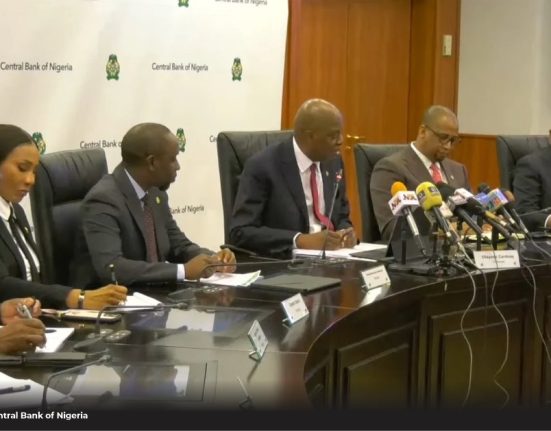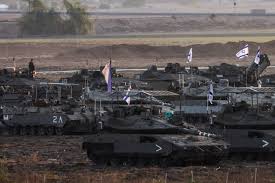By Amidat Shittu
Badagry, Lagos On June 14, 2025, delegates of the 18th NASFAT Youth National Conference, themed Eko ’25, stepped into the heart of West African history in a tour of Badagry’s first storey building and the historic slave trade site at Seriki Williams Abass house. The journey through the echoes of colonial architecture and human suffering brought together Muslim youths from across Nigeria and West Africa, including participants from Lagos, Oyo, Ekiti, Abuja, Ghana, Benin Republic, Burkina Faso and Côte d’Ivoire.
Leading the visit was Mr Gabriel a passionate and well versed tour guide who painted a vivid picture of Nigeria’s intersection with Christianity, Western education and the transatlantic slave trade. The tour began at the iconic first storey building in Nigeria, constructed in 1842 with imported iron corrugated roofing sheets and wooden beams. Still standing in partial grandeur despite visible signs of decay the structure represents the early Christian mission in Yoruba land under the Church Missionary Society.
Mr Gabriel highlighted key features of the building a chair from 1878, an original architectural map dating back to 1843, and the “Miracle Well” dug in 1842, which till this day has never dried up. Delegates were particularly moved by stories of Claudius Phillips believed to be the country’s first school teacher who taught between 1845 and 1868 and helped shape Nigeria’s foundational educational structure. Youths were also shown the school master’s residence, wooden boarding houses, and other missionary quarters, many of which still preserve their original form.
However, the mood shifted profoundly as the group was ushered into the compound of Seriki Williams Abass, a local chief and slave merchant who played a key role in the slave trade in Badagry. There, Mr Gabriel explained in detail how enslaved Africans were captured, stored, and sold to foreign merchants. Delegates were shown tiny shackles short chains used to restrain the slaves and longer iron chains that bound them for weeks, sometimes months.
In one of the most haunting parts of the tour, the group entered a cramped, dark room where 40 slaves were once confined before being transported. There was barely space to move, yet this was once the holding chamber for human lives treated as cargo. Just outside an umbrella like structure said to have covered 40 slaves at a time during outdoor sorting stood next to the courtyard where transactions occurred.
Seeing these sites firsthand left a deep impact on the young delegates. Many had read about slavery in books, but standing inside the very rooms where people were shackled and sold brought a chilling reality to what had once been a distant narrative. A delegate from Burkina Faso remarked, “This history is not just Nigerian. It is West African. It is ours, And it hurts.”
The combination of the first storey building often hailed as the birthplace of formal education in Nigeria and the adjacent slave relics at Seriki’s compound presented a jarring contrast. One represented hope, the other trauma. Together, they told a fuller story of Nigeria’s colonial encounter one shaped by both faith and exploitation.
Despite parts of the building having deteriorated, as noted by Mr Gabriel, the experience underscored the importance of historical preservation and education. Delegates were reminded that history is not only to be remembered but to be taught, visited and felt, so that future generations may never forget the cost of freedom or the value of truth.
With the 18th NASFAT Youth National Conference aiming to strengthen leadership, faith, and social consciousness among young Muslims, this visit served not just as an excursion but as a call to remember and protect the past. As Mr. Gabriel gently closed the heavy wooden door of the old house behind the last group the silence that followed echoed with reverence proof that history when seen and touched, speaks louder than words.
As the conference continues, the emotional gravity of the Badagry tour is expected to linger. For many of the NASFAT youths, the walk through these monuments was more than a lesson in history, it was a confrontation with their collective past one that demands remembrance, reflection and resilience.







